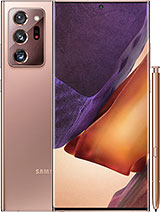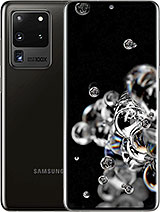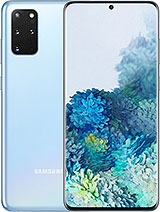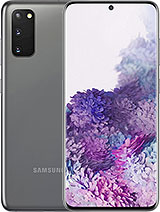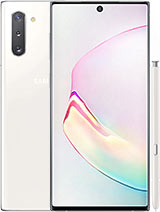Galaxy Note 20 Ultra Durability Test - What is 'Victus' Glass? By JerryRigEverything
Samsung comes out with a lot of new phones and they do it very quickly. This new Galaxy Note 20 Ultra 5G is their most expensive top of the line flagship yet for 2020. It's one of those phones where we all pay extra for the 5G, but only 5 people get to actually use it. Inside the box we get a protective rubber case – kinda cool. This is the Mystic Black version and it comes with the normal USB-C headphone cord and a 25 watt wall charger. The thing that stands out to me the most though is this camera bump.
The cameras kind of own this phone. It's like a full fledged domino glued to the back and it's just about as thick as a Lego. Rather incredible. Anyway, I hear Samsung is using new glass this time around. Gorilla Glass Victus, so it should be interesting.
Let's get started. One of the reasons I'm interested in this Galaxy Note 20 Ultra is because it's the newer version of the phone that I'm currently using – the Galaxy Note 10 Plus. And with their nearly identical footprint and specs, it's time to decide if it's worth the upgrade for me or not. For reference, currently my older Note 10 Plus can be found on eBay in the $700 range. And the new Note 20 Ultra is a wallet breaking $1300.
So if you ever want to save oodles of cash, buying last year's model is always an option. Let's talk about the glass. So Corning just came out with a new glass and they've switched from using numbers to calling this glass Victus – meaning “to live. ” Samsung was nice enough to protect the Victus glass with a free screen protector. But once we get that removed, we can start with the real scratch test.
My Mohs mineral picks can differentiate between different materials. You know, if the screen were plastic it would start scratching in the 2 or 3 range. If it were glass it would start scratching in the 5 or 6 range. And if the screen was made from sapphire, which we haven't seen in a while now, the screen would start scratching at a level 8 or 9. Corning Gorilla Glass Victus is still glass and it scratches at a level 6 with deeper grooves at a level 7.
You might be thinking, 'But Jerry, what in the world does Corning mean when they say Victus is 4x more scratch resistant than regular glass?' And that's a great question. When Corning uses these talking points, they aren't comparing Victus to previous versions of Gorilla. They are comparing Victus to regular glass and it is indeed much stronger than regular glass. But it's still glass. You know we have the plastic, glass, and sapphire realms of hardness.
The glass realm is here in the middle at 5, 6, or 7. All of the incremental improvements that Gorilla Glass has made have been inside this glass realm, which my Mohs hardness picks are too generalized to differentiate between. The Mohs mineral test is a rough scale designed to find the difference between lots of materials, like plastic all the way to sapphire. But not to check the minute subtle differences between different types of glass. A machine capable of specifically analyzing that section of information would cost in the $100,000 dollar range.
And maybe someday I can get my hands on one. But while Victus is an improvement in the glass realm, glass is still glass. And I'm still always just going to use a case. The S pen does still have removable tips so you can switch between the soft and hard depending on your writing style. The S pen, even though I don't actually use mine all that often, is still one of my favorite pieces of technology.
Pulling out the back half of the pen we can see the brains of the operation, along with the capacitor at the end that can charge up in a matter of seconds and provide enough power for the pen to last 30 minutes outside of the phone. Capacitors are way cooler than batteries. Above the capacitor is just the clicky bit of the pen. But the writing tip of the S pen is where things start to get fun. There are a lot of copper windings around the tip.
This generates a magnetic field so the phone knows where the tip of the pen is at, even without it actually touching the capacitive display. There is a pressure sensor inside the tip, of course, for when it is touching. But apparently it needs to be in like one piece or something to keep functioning. But you get the point. It gets even cooler when we look on the inside of the phone.
There is a super tiny wireless charger resting on top of the S pen slot that you can see here on my Teardown Skin. And that tiny wireless pad is what charges up the S pen through the coils in the tip while it's inside the phone. Pretty awesome. The Note 20 Ultra does have a circular 10 megapixel front facing camera, with about the same placement from last year's model. As well as the almost non-existent earpiece grill.
Just a tiny slit up here at the top. The phone body is made from aluminum. You can see the silver peeking out from underneath the Mystic Black. And the buttons are also made from metal, and for some reason, still totally removable. The top of the phone has some protective clear plastic, along with the micro SD expansion and SIM card tray.
And no headphone jack. Left side of the phone is still bare. No dedicated Bixby button again. Glad that change is lasting. The bottom of the phone has more temporary clear protective plastic and metal.
Next to the USB-C port. The Note 20 Ultra back is made from glass, but rumor has it that Samsung's regular Note 20 is made from plastic this year. Let me know down in the comments if you want me to test that phone out. Where I do start to get a little bit tempted is the cameras. The Note 20 Ultra has a builtin 12 megapixel 5x periscope camera, where mine only has 2x.
Then there's the 108 megapixel 8k main camera, where mine's only 12 megapixels and 4k. Then we have the 12 megapixel ultra wide camera, where mine's at 16. There are some pretty big changes this year camera-wise, but still probably not worth my $1300 – especially since my own phone is still working pretty great. Plus, maybe if I wait a bit they'll find a way to minimize that camera bump. The only way to make this camera bump cool is by showing what's actually inside of it.
I'll lay the Teardown Skin over top of the camera plateau and get the rest of the phone covered up. And now we can see exactly how big the sensors are and how much real estate that periscope zoom camera takes up underneath the hump. It's kind of all similar to last year's design except for the S pen is on the other side. I'll leave a link for my Teardown Skin down in the description. It's already available for most of the popular phones, tablets and even laptops.
The screen has improved a bit this time around. Even though it's the same resolution, it has grown.1 inches and also has the capability to refresh at 120 hertz. Also a tiny bit tempting, but avoiding 1300 hertz on my wallet is more important than needing hertz for my eyes. After about 23 seconds the screen started to go black, which is normally something we only see on LCD screens. This guy doesn't recover and stays burnt.
Rather interesting for an AMOLED. Just another prime example of why we really have no idea why the burn test exists. The fingerprint scanner test is useful though. Samsung is once again using the ultrasonic fingerprint reader. You can see that it's not using the light from the screen to illuminate my digit.
It's just using those ultrasonic waves through the glass to capture my fingerprint ridges. I'll add some level 7 deeper grooves to damage things up and try again. And it still works every single time. Not too shabby. I'll peel off the structurally enhancing magic skin.
Kind of kidding on the structural part but it is magic. The Note 20 Ultra weighs 4 grams more than my Note 10 Plus and just like last year it's as solid as a rock. No flex in the frame, no damage to the glass or to the phone itself. I would say I'm impressed, but it does cost $1300, so it better be durable. And no one should be surprised that it is.
Instead of buying an Ultra phone and having an Ultra thin wallet, I'm going to stick with my regular phone and just keep my wallet where it's at. Speaking of keeping your wallet where it's at, I'm going to be giving away these JerryRigEverything stickers for free. All you have to do to get one is send me a regular old snail mail letter to the address you see on screen. And I'll send you one of these large stickers back to you for free. Just make sure your return address is readable so I know where to send it.
And feel free to send me a sticker of your own if you'd like. I'll add it to the sticker wall in my garage. With Trump and DeJoy working their hardest to stop the mail, it might take a bit longer for you to get your sticker, but we can help stick it to them by being pen pals. The address is up on the screen and I'll even be sending these internationally for free. So feel free to write me a letter no matter where you're from.
It feels good to keep my phone around a while longer. No need to replace something that isn't broken. I will be taking apart the Note 20 Ultra to see how the insides compare with the outsides. So hit that subscribe button if you haven't already. And come hang out with me on Instagram and Twitter.
Thanks a ton for watching. I'll see you around.
Source : JerryRigEverything

